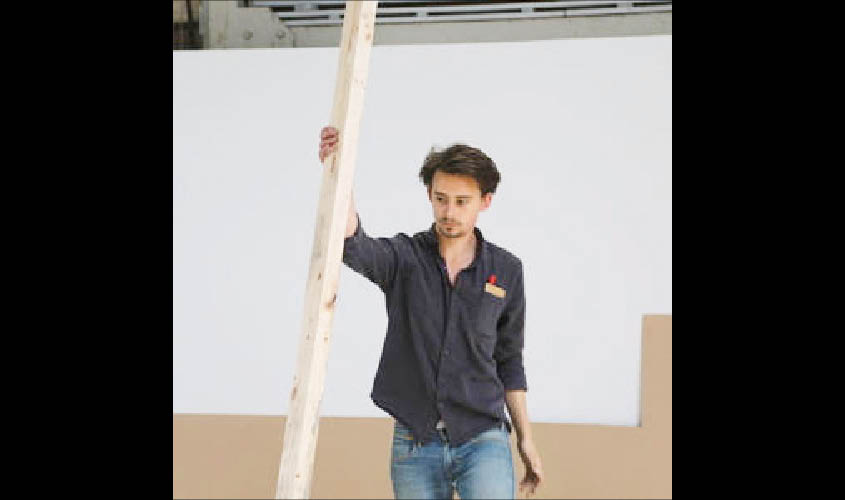Since leaving the Ruskin School of Art, one of Britain’s leading art schools at the University of Oxford, Finbar Ward has not been thinking figuratively. Intrigued by the detail in Hans Holbein and the brushstrokes of Mark Rothko, he looks for inspiration in European medieval paintings but get fixated on a tiny element such as the texture of the sky or the light in a jewel. His work is an expressionist hybrid of painting, sculpture and installation; 3-dimentional pieces that he creates specifically for the intended exhibition space, so the work feels like it “belongs” there. Finbar’s recurring themes are space, time and unrecognisable/recycled fragments of this and that; he wants to slow the pace of viewing his art down and he wants the piece to require analysis from the viewer, thus visiting his exhibition is not a passive experience.
He expects a recent work entitled Dumps to provoke a physical experience, a vessel/sac full of rubble stretched into a frame and partly painted, that he hopes suggests something that was never completed.
This reporter queried if some explanation or context would be helpful to the viewer when considering contemporary art in general? Finbar replies “Viewing should be a democratic experience I prefer the narrative to remain unfilled. If I am there I love to talk about my work but if I am not there I have no power, the interpretation is up to the viewer, I think explanations can limit the experience.”
Finbar’s work is popular in Europe, he has exhibited at the British Embassy in Paris and the Saachi Gallery in London; he is represented by Geukens and Devil in Belgium, Annex 14 in Zurich, with forthcoming art fairs in Copenhagen and Vienna. Finbar believes his work suits the Belgian cultural identity; he thinks his minimalist touch during his recent “white period” appealed to the Flemish Quarter’s Protestant aesthetic of purity.
Inspite of being a celebrated artist, 28-year-old Finbar makes ends meet by part-time managing the well fashionably renowned Spanish/North African restaurant Moro, but this autumn he is taking a break to accept the invitation of Doris Ghetta Galleria. He embarks on a three-week residency in the Dolomite mountains in Northern Italy, a craft area known for manufacturing wooden religious icons. He is looking forward to collecting the debris discarded by the craftsmen, he muses that he may depart from his niche, the results will be seen in an exhibition in October.

